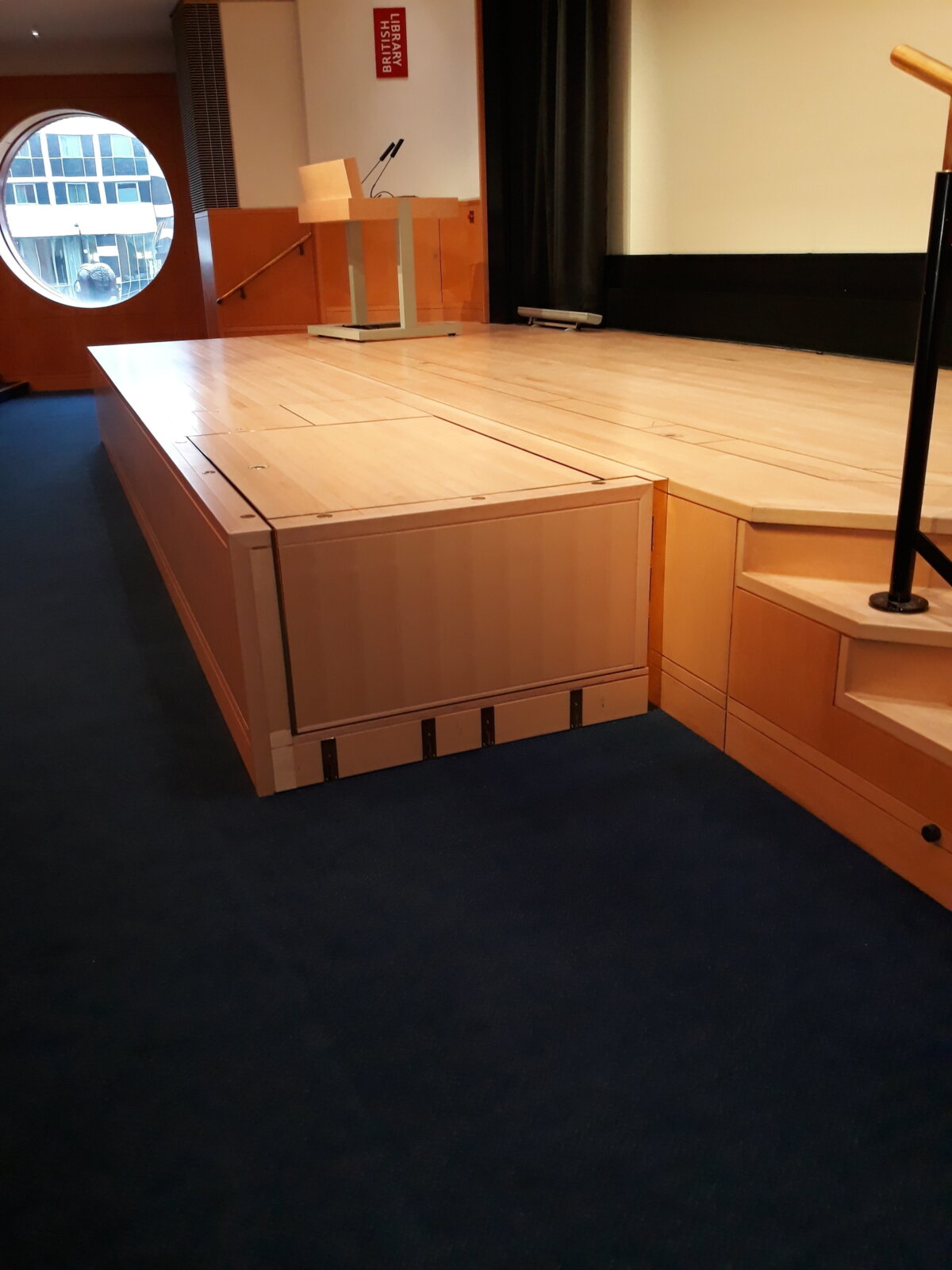Key Takeaways
-
A bespoke stage platform lift costs anything from £40,000 to £165,000 installed.
-
The Sesame People’s Lift offers a simpler, pit-mounted alternative at about £40,000.
-
The Richmond Rising Platform Lift is a deep-pit, full-rise model costing around £115,000 and requires a 1600 mm pit depth.
-
Stage-embedded systems provide a flush finish but require greater structural work.
-
Typical pit depth for compact lifts like the People’s Lift is about 650 mm.
Introduction
When planning an accessibility lift for a low rise of around half a metre, two main design paths emerge: a fully embedded stage platform lift or a front-mounted, pit-based lift such as the Sesame People’s Lift. The choice depends on how often the lift is used, the available pit depth, and the desired finish.
This guide explains installation requirements, pricing, and practical differences between these options, using real-world examples such as the British Library stage lift and a compact installation for a cricket pavilion.
What Are the Main Platform Lift Types for Low-Rise Access?
A stage platform lift is built directly into the stage so that it becomes completely flush when raised. These systems are bespoke and ideal for venues where appearance and frequent use are priorities.
By contrast, the Sesame People’s Lift is a compact, pit-mounted system installed in front of the raised area. It performs the same function at a lower cost, making it suitable for locations where space or usage frequency does not justify a full stage-embedded lift.
How Much Does a Platform Lift Cost?
| Lift Type | Typical Installation | Estimated Cost (London) | Notes |
|---|---|---|---|
| Stage-Embedded Platform Lift | Built into the stage floor | £65,000 + | Bespoke design, flush finish |
| Sesame People’s Lift | Pit-mounted in front of the rise | £40,000 | Requires 650 mm pit depth |
| Richmond Rising Platform Lift | Deep-pit vertical travel design | £115,000 + | Requires approx. 1600 mm pit depth for full scissor movement and structural clearance |
These figures include installation but exclude building works for pit formation, which are typically handled by the main contractor.
What Are the Pit Depth Requirements?
For compact pit-mounted lifts such as the Sesame People’s Lift, a depth of around 650 mm is needed. Shallower pits can be engineered, but this increases costs by roughly £3,000–£4,000.
Stage lifts like the British Library Platform Lift are installed directly on top of the slab and can operate without a pit if the structure beneath is sufficiently supported.
Where Can These Lifts Be Used?
Low-rise platform lifts are frequently installed in:
-
Performance or presentation stages where flush integration is required.
-
Sporting venues, such as cricket pavilions, requiring access to an analyst or commentary platform.
-
Heritage buildings or private spaces where aesthetics and space limitations are important.
For internal installations, drainage systems are unnecessary. Outdoor versions, however, include a sump pump to handle rainwater, as seen on external versions of the People’s Lift.
Choosing Between Functionality and Finish
The choice between a stage lift and a pit-based lift depends on balancing aesthetics with practicality. Stage-integrated lifts provide a seamless, hidden appearance for high-profile venues, while pit-mounted lifts offer cost-effective accessibility with minimal disruption to existing floors or structures.
Related Knowledge Hub Articles
-
Engineering the Impossible: Custom Accessibility Design at Scale
-
Inclusive Design Beyond Ramps: Reimagining Modern Access Solutions
For official accessibility standards, refer to high-authority sources such as UK Building Regulations Part M or BS 8300.
Frequently Asked Questions (FAQ)
How much does a platform lift cost?
A fully recessed stage platform lift starts around £65,000 installed, while a Sesame People’s Lift typically costs about £40,000. The Richmond Rising Platform Lift costs around £115,000 + due to its complexity.
What pit depth is required?
A 650 mm pit depth suits most low-rise lifts. The Richmond model requires 1600 mm, while stage lifts can operate without a pit.
Can these lifts be used outside?
Yes. External versions include sump pumps for drainage, while internal models do not require them.
What’s the difference between a stage lift and a pit-mounted lift?
Stage lifts are fully embedded and flush with the floor when raised. Pit-mounted lifts are installed in front of the rise for simpler, lower-cost access.
Where have these systems been used?
From the British Library to private sporting pavilions, these lifts demonstrate flexibility across public and private settings.
How can I explore which model fits my project?
You can book a Teams Meeting with our Project Managers to discuss your requirements and receive design guidance.
Summary
For low-rise access challenges, the choice between a bespoke stage-embedded lift and a pit-mounted system like the Sesame People’s Lift depends on the site layout, usage frequency, and budget. Both options combine reliability, safety, and inclusive design to meet modern accessibility standards.
By understanding the cost, pit depth, and technical requirements, designers and project managers can confidently select the right lift for each environment.

